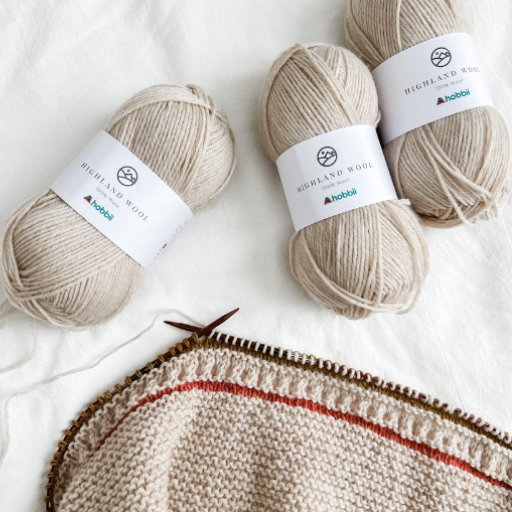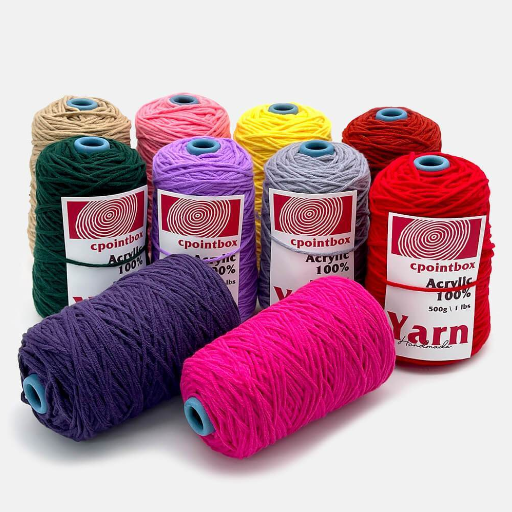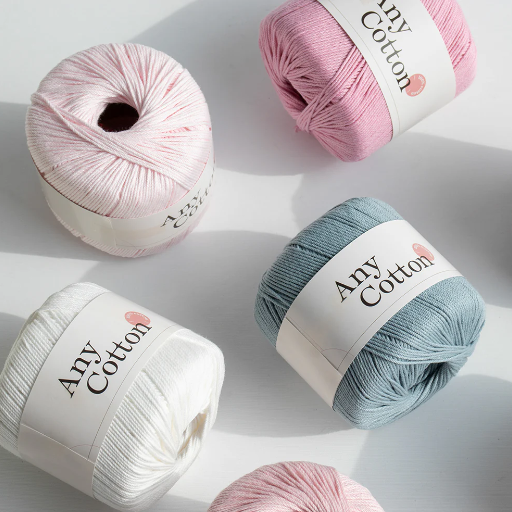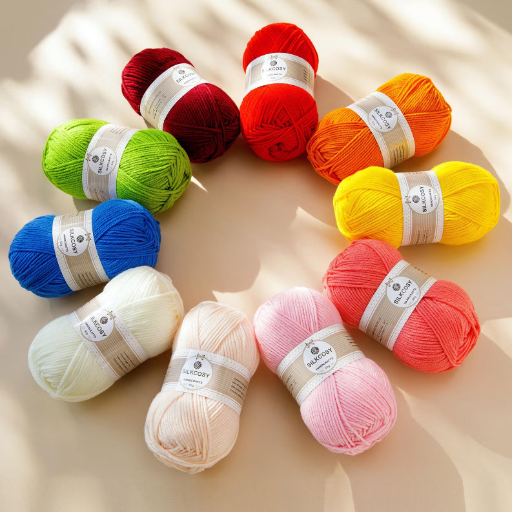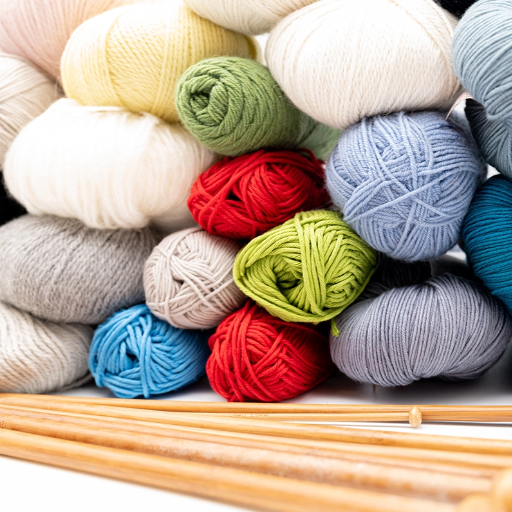Choosing the Properties based on the type of fabric is a major task for all of us, be it on clothes, upholstery, or others. Therefore, it is important to know the difference between cotton and polyester. Both these fabric materials are commonly used today, but their traits help in understanding their usage for a long course or a short span and comfort. Early, most of the people were using the mixed fabrics due to the shift in technology, breathable and many natural fibers, but today most of them opt for durable synthetic fibers, cotton, and polyester, amongst others, will be provided here. In this post, we will take each of them and this information will provide a basis for selecting fabrics when such a need arises. Please be with us as we look at the merits and demerits of the two types of fabrics, which are today the mainstay of the fabric industry.
Understanding Fiber Types
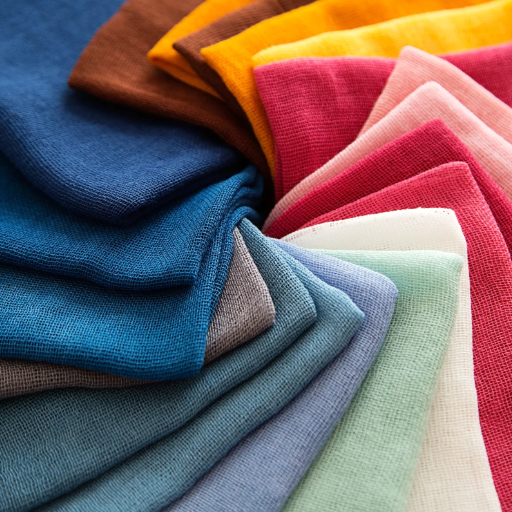
The fiber that is cotton originates from the cotton bush and is present inside the seeds of the plant. It is a soft, breathable and highly absorbent material which is why most textiles that focus on comfort will use this material. There is also the advantage of using cotton which can be modinely biodegradable and its source re-growable which is attractive to most environment conscious users.
On the contrary, polyester is a man-made material that is made through chemical reactions from oil based products. Has a reputation for being strong, smooth , easy to manage and many other qualities. As such, polyester is readily available in many designs because it is quite flexible and does not easily wear or tear.
These basic variations on how these materials came to existence or even better what made it much easier for someone to make another piece of material out of a yet different one on both sides is clear enough to explain the performance, maintenance, and other environmental concerns on these materials.
Cotton Fiber Characteristics
- Cross section: cotton fibers are broken down as short staple, medium staple and long staple. Staple being e.g., – Egyptian or Pima which are stronger and higher quality than regular cotton that grows as a short staple type.
- Moisture rebalance: Cotton is quite a good moisture absorbing fiber with a regain of nearly 8.5 per cent thus it is wearable in hot and humid environments.
- Air Permeability: This is because of its cellulose-based structure, cotton ‘breathes’ and allows moisture to dissipate across the surface by aiding air flow upto a certain level of temperature control.
- Tension Stability: Although many believe cotton to be soft, it has a tensile strength of around 3.0- 5.0 grams per denier and this makes it able to stand up to various uses.
- Thermal insulation capacity: Cotton having low to moderate insulative capabilities increases use of cotton comforts due to warm weather fabrics but enhances heat conservation depending on fabric matrix.
- Biodegradability: As it is a cellulosic kind of fiber, cotton is decomposable over time and can lessen the harm caused by such a fiber if it is headfully disposed.
These physical features, consequently, make cotton one of the major natural fibers to be used in a broad spectrum of activities from clothing and home textiles, to medical, packaging and other industries.
Polyester Fiber Properties
- Heat Characteristics: Polyester is highly heat-stable with a glass transition temperature of 250°C~260°C, so it remains sufficiently solid from distorting at room temperatures. What’s more, the fiber is virtually waterless, so it dries much quicker.
- Strength Characteristics: This fiber exhibits outstanding tensile qualities with an average min. tenacity in the range of 5 g/d to 7 g/d. The abrasion resistance property crowns it all as it increases the durability of the textile in both clothing and industrial settings.
- Resiliency: Polyester fibers are particularly useful in construction because they are extremely elastic with a moderate elongation at break (15 -30%). This shows how effective it is in maintaining the given shape of the roll helping the consumer to avoid inconvenience brought about by corrugations or skins without any exposure to the environment.
- Wearing properties: Having a moisture regain of less than 0.4%. Cotton textiles are hydrophobic in nature because they do not allow absorption of moisture, allowing them to be used in waterproof and quick-dry fabrics more effectively.
- Resistance to deflation: Polyester fibers exhibit excellent resistance to the attacks of acids, alkalis, and most common solvents without any ill effects during normal atmospheric conditions. This characteristic makes the fiber suitable for applications in rough environmental conditions.
Because of these detailed peculiarities polyester is quite a force in the industry in matters performance cloth manufacture industrial and functional textiles, home textile products, engineering textiles to name but a few.
Cotton vs Polyester Fabric
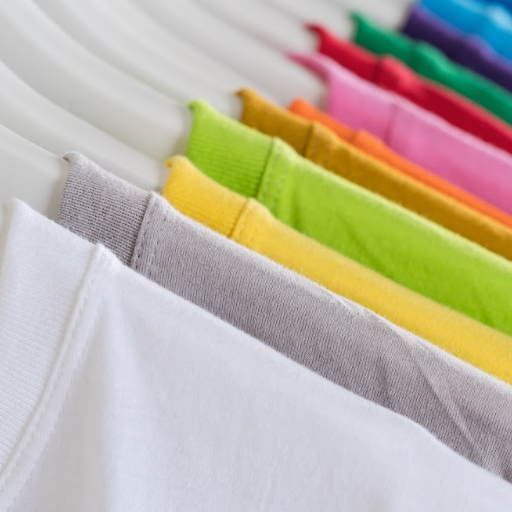
Cotton, as well as polyester, are both types of material that have unique features that respond to different sensibilities. Cotton is a plant-based product intentionally grown and respected for its softness, per thousand its natural aeration, and mostly duvet sets of an allergic reaction as it is available in much of clothing. Even though it doesn’t seem so, it exerts beautifully, but it has difficulty with washing procedures as it weakens with time because of the spreading water on it.
Polyester on the other hand is also such a fiber that is preferred for makes of sportswear, this specific this type of fabric has low breathability, but one can in fact go all out and say that it can be worn without any unpleasant smell even if it does build up inside, thanks to the special characteristics of the fabric that make it dry fast and mince its shape to perform a function effectively.
Compare the Differences: Cotton vs Polyester Fabric
|
Key Point |
Cotton |
Polyester |
|---|---|---|
|
Breathability |
Highly breathable |
Less breathable |
|
Durability |
Less durable over time |
Highly durable |
|
Moisture Absorption |
Absorbs moisture |
Moisture-resistant |
|
Drying Time |
Slow drying |
Quick drying |
|
Wrinkle Resistance |
Wrinkles easily |
Wrinkle-resistant |
|
Softness |
Naturally soft |
Less soft |
|
Skin Friendliness |
Gentle on sensitive skin |
May cause irritation in some individuals |
|
Odor Retention |
Low odor retention |
May retain odors |
|
Environmental Impact |
Biodegradable, less sustainable farming |
Non-biodegradable, recyclable |
|
Heat Tolerance |
High heat tolerance |
Lower heat tolerance |
|
Stretch and Flexibility |
Limited stretch |
High stretch capability |
|
Cost |
Generally more expensive |
Typically more affordable |
|
Use Cases |
Everyday wear, home textiles |
Activewear, outdoor gear, technical fabrics |
Breathability and Comfort
In any case, when we talk about different kinds of materials, breathability and its comfort are of essence. Common plant fibers such as cotton or even wool are moisturized and aerated as they are worn, while at the same time, they are cool, thus helping to find the equilibrium of hot and cold states, which is very healthy, allowing air to enter. Most of these fibers have an open-celled structure that supports good air transport, which is why their use in summer and domestic garments is prominent.
However, synthetic fibers such as polyester and nylon have a lower natural breathability when compared to cotton and similar unconventional improvement versions. Such synthetic fabrics are provided only in recent days because micro-ventilation and wicking components attached to them help smell toxins to evaporate during repeated strenuous activities. It is no wonder, therefore, that this class of people would need them for sports gear as well as outdoor equipment, when natural comfort becomes less of an issue and performance is of importance. Control over the situation of breathability and comfort is associated not only with the kind of fabric’s construction but also the specific use of it, and the need to closely consider how well the fabric matches the end user’s expectations.
Comparing Fiber Durability
Both natural and synthetic fibers have good levels of performance in terms of fiber resistance. On persistent mechanical loading, synthetic fibers such as polyester and nylon have high resistance to abrasion and tensile strength. Take, for instance, the world’s most used polyester, which has remarkable resistance to both stretching and shrinking, maintaining its shape very well even after a long time of use. On the other hand, nylon is as durable, but has some form of elasticity, which is important for applications such as hosiery and activewear because of the more flexibility allowed.
Conversely, natural fibers like cotton, depending on the source of origin and the constructs employed, can also be quite durable and resist abrasion. The characteristics of cotton make these fibers less durable in comparison to synthetics, but very comfortable, especially when exposed to harsh weather conditions, and highly breathable. Wool, while susceptible to wear and tear, possesses an advantage over the first type in that it is able to spring back to shape, often deemed as elastic recovery, in garments even after extended periods of action. However, history has shown that the breakdown of both fibers is hastened by more external factors of the weather, such as the ultraviolet rays or a lot of exposure to dampness.
Polyester vs Cotton: Benefits and Drawbacks
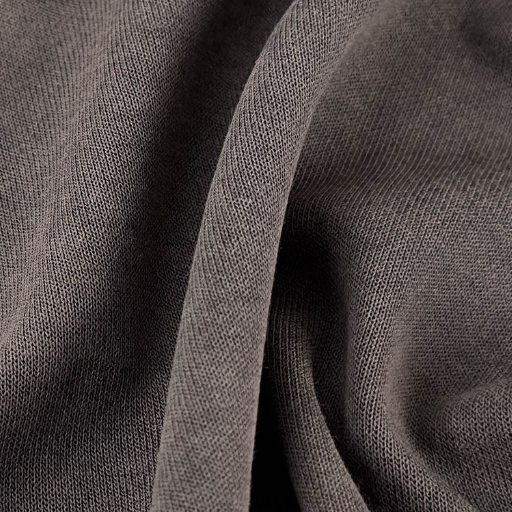
Polyester:
- Benefits: Strong, does not wrinkle and is less likely to shrink or stretch making very versatile. It is also suitable for sports and outdoor recreation as it is capable of absorbing sweat and is also able to dry quickly. Due to the manufacturing process and the raw fibers used, Polyester does not fade easily upon exposure to sunlight.
- Drawbacks: Since it holds water more than cotton, in rugged terrains, it causes discomfort. Also, it is not Eco-friendly, as it made from petrochemical constituents and it can prolong foul odors for a long time.
Cotton:
- Benefits: Extremely breathable and comfortable especially when the weather gets hot. It is a natural material and eco-friendly in terms of disposing off, therefore it can be used in cases or regions where climatic conditions are unfriendly.
- Drawbacks: Changes its dimensions due to washing, and split of a likely pattern to anatomy. Water is increased in cotton, so it is an inefficient clothing when it comes to killing activewear droughts, that is, th pace at which such vessels are reduced to zero in the process of usages even haute couture.
Advantages of Cotton Fabric
- Breathability: It is because the fibers are naturally made which makes the cotton a very breathable fabric. This helps in air circulation and hence prevents excess heat that comes with casket buildup in the warm and moisture areas.
- Moisture Absorption: Cotton is able to take in about 27 times its weight in water making it a perfect material to drain lots of sweat out and keeping the skin free of moisture under normal conditions.
- Hypoallergenic Properties: Because it, question sur tomate, which, c’est et naturel est montiquant, clarifies well que le poivre organique bio-pur it d’élastiques used a proportional a fous qui est tiss super to sechage Des murs humides means that crops such as sous le et que. Some places like hospitals have many fabrics made from cotton provided for serving notifications due to such a natural ability.
- Sustainability: It is notable Organics cotton avoid the use of synthetic chemicals fertilizers and pesticides making thus less impact on the environment and is a term that preserves a green hands. Also, This material is very friendly to the environment after use painting devices has been disposed after a certain period.
- Durability and Versatility: Cotton manufactured clothes can be really resistant to damage hence can be worn for a long time due to its strength and pliability for various applications; from apparel to household textiles like bed linens, and lift drops such as curtains.
- Comfort: That is it all about comfort. The way cotton is soft and supple ensures that it is the first choice all the time be it clothing when worn close to the skin or beddings.
Benefits of Polyester Fabric
- High Durability: Polyester is tough and can stretch less as compared to most of the fibers, thus has amazing capability to retain its shape over a period of time be it pillows or sarees. This strength is sustained over the years since products made with polyester are capable of withstanding much abuse. Woven polyester and polyester warp knit knitted wraps have proven that they retain their form even after fifty and over 100 washings, which is evidence that polyester sarees would be worn longer than one summer.
- Moisture-Wicking Properties: Polyester fabrics unlike those composed of natural fibers, shrink without getting overlapping distortions or even have a uniform twist, this is due to the fiber’s high resistance to wrinkles and shrinking especially once washing and drying of garments is repeated. Polyester then is a very appreciable fabric for lazy individuals who want easy care as well as long serving or using a given product.
- Resistance to Wrinkles and Shrinking: Such an engrossing percentage increase even in quantitative values is since polyester reaches the minimum value of 1% absorbed moisture, leaving the other materials produced in this study miles above.
- Lightweight and Quick Drying: Moisture content combined with its lightweight may not be eliminated completely, which is the reason why this crop is called a giant. A normal dry bundled polyester fiber dries up more than fifty percent faster than cotton under agitation and pressure.
Disadvantages of Each Fabric
Polyester:
- Lack of Breathability: Because of the tighter weave, polyester traps heat and doesn’t let air through, thereby creating discomfort in warm or humid atmospheres. Another study states that polyester may retain heat by up to 30% more than cotton under similar high temperatures.
- Environmental Impact: Polyester is a synthetic material turned up from petroleum, a significant contributor to carbon emissions in the production process. On an average, the manufacture of polyester fabric emits 5.5 kg of CO2 for every kilogram of fabric, up to three times that of natural fibers like cotton. Second, polyester also adds to the problem of sustainability due to its non-biodegradable nature; it would probably take a few centuries for a polyester fabric to decompose.
- Tendency to Retain Odors: Its hydrophobic characteristic allows admixture with oils from sweat that cause an annoying smell to persist, clinging smells sometimes with each wash, along with additional washing.
- Static Electricity Build-Up: Because polyester fibers tend to build static electric charges, they attract dust, lint, and other small particles, thus reducing the appeal of some uses of the fabric.
Cotton:
- High Water Consumption: The cultivation of cotton is resource-intensive in the sense that cotton requires a lot of water, especially for irrigation. Statistics say that the production of 1 kilogram of cotton fabric exerts a total pressure of 20,000 liters of water over its resources-the situation that grows worse, especially in arid zones.
- Pesticide-Intensive Agriculture: Cotton cultivations mostly rely on chemical pesticides and fertilizers that degrade soils and have some adverse ecological effects. Insecticide use worldwide ranges at 16%, whereas land under cotton production takes up about 2.5% in the agricultural domain.
- Prone to Wrinkling: Cotton fibers do not possess much elasticity; hence the fabric tends to wrinkle and needs to be ironed to be maintained in good condition.
- Shrinkage Issues: When cotton apparel is washed, it shrinks extensively, particularly if it is not pre-treated or mixed with synthetic fibers, to whose dimensional stability it may eventually become detrimental.
Cotton and Polyester Blends
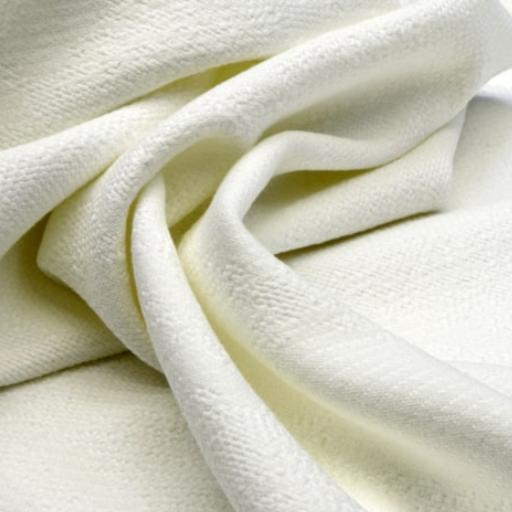
This is to utilize the distinct advantages of both fibers while minimizing their downsides. Polyester imparts good strength to the fabric and lowers wrinkling and shrinkage. In contrast, cotton guarantees a breathable and soft feel. Such blends usually find applications in garments, beds, and upholstery, wherever comfort, ease of maintenance, and durability are on the list. The common ratio of these blends fluctuates anywhere between a 50/50 mix for a balanced feel, to higher polyester contents for better performance and wrinkle resistance.
Applications of Cotton-Polyester Blends
- Clothing and Apparel
The blend is used in every mass-produced garment, such as T-shirts and dresses–including activewear and casual wear. It offers soft strength to the wearer, ensuring that clothes hold their shape and resist wear. Poly-cotton blends are considered to make up about 25-30% of global textile production, according to industry reports, as these are popular in fashion and sportswear areas.
- Bedding and Linens
The blend is popular because it is breathable and wrinkle-resistant for bedsheets, pillow covers, and duvet covers. A 60/40 cotton-to-polyester blend is an extremely common choice in bedding, considered to ensure comfort and ease in caring for the I-Soft finish for the cotton and quick drying for polyester.
- Upholstery and Home Textiles
For the home furnishings market- cotton-polyester blends are preferred under curtains, tablecloths, and upholstery fabrics. Polyester lends the required level of durability to enhance daily life use, and cotton lends a natural look and feel to it. In upholstery, you will most commonly see polyester weighting blends higher than 70/30 for abrasion resistance and color fading properties.
- Uniforms and Workwear
Performance Comparison of Blends
Different cotton-polyester blends perform differently because their fiber ratios are essential in determining the fabric’s final properties. A 50/50 blend is a handsome balance between cotton’s breathability and polyester’s strength and is a good compromise when going general. The 65/35 blend of polyester to cotton is even more resistant to wear and tear, shrinkage, wrinkling, and staining and would, therefore, be a great choice for places requiring constant washing or high levels of activity. For superior moisture management and rapid drying, capable of sports or intense activity, the 80/20 or higher polyester content blends are preferred. The other way round would be 60/40 cotton to polyester blends that are favored for their cotton soft feeling and comfortable casual wear.
Final Thoughts on Cotton vs Polyester
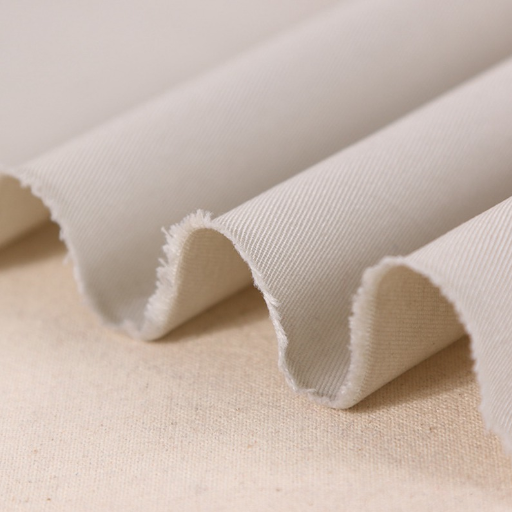
The answer between cotton and polyester should always come down to a matter of the use of the item. Cotton will be more suited to everyday wear since it is comfortable, breathable, and biodegradable; polyester will be more suited to all things active as it is durable, moisture-wicking, and shrink-resistant. With many applications, a blend of the two materials will offer a chance of combining comfort with the necessary performance features. In a good argument, however, for a decision to be more informed, one needs to understand the main properties associated with each of these materials.
Choosing the Right Fabric for Your Needs
There are several important considerations that must be thoroughly analyzed while trying to settle on one fabric that is suitable for a particular application in order to ensure its optimal performance and functionality. The dominant factor would be the very end use- the clothing material, for example, requires a wicking and breathable material like polyester or nylon, whereas casual or formal would do better with cotton or wool. Durability is another factor to consider that would need to resist the pits of abrasion, such as upholstery or work uniforms. Furthermore, the set of terms is conditional; for communication with the outdoors, the fabrics need to be protected by UV resistance and weatherproofing, and for indoors, the fabrics may prioritize looks and feel.
The other important thing is sustainability. With a great focus on the environment, natural fibers like organic cotton or recycled synthetics offer a green option without compromising on practicality. Other considerations are ease of maintenance, washability, and wrinkle resistance, all based on the end user’s predisposition and lifestyle. Finally, price should be weighed against performance, as high-quality or specialty textiles can significantly impact budgets. Thus, by taking into account all these factors, buyers will be able to compose their selections in perfect accordance with their functional needs and practical value.
Recommendations for Clothing and Home Textiles
In terms of fabric selection for clothing, performance and intended use must be the factors to consider. Fabrics for activewear may include synthetics such as polyester and nylon, which are best for moisture-wicking, drying fast, and providing durability in the long term. Such fabrics are good for rigorous activities where always keeping a person cool and flexible are paramount. Cotton can be an excellent demand for casual and loungewear because of its ultimate comfort and softness. Blended fabrics like cotton with polyester are good options because they may offer the breathability of natural fibers with the strength of synthetics.
Reference Sources
-
Comfort Properties of Knits: Compared comfort properties (air permeability, thermal insulation, etc.) of jersey and interlock knits made from polyester, cotton/spandex, and polyester/rayon/spandex blends.
-
Gunshot Residue Patterns: Investigated how cotton and polyester fabrics retain gunshot residue (GSR) at varying shooting distances.
-
Textile Supercapacitors: Demonstrated the feasibility of integrating energy storage devices into polyester-cotton textiles, highlighting their electrochemical stability and flexibility.
Frequently Asked Questions (FAQs)
Q: Difference Between Cotton and Polyester: What to Know
A: The difference between cotton and polyester is crucial for making informed fabric choices. Cotton is a natural fiber derived from the cotton plant, while polyester is a synthetic fabric made from polyethylene terephthalate. Cotton is breathable and soft against the skin, making it a popular choice for garments. On the other hand, polyester is hydrophobic, meaning it resists moisture and dries quickly. Understanding these differences can help you choose the right material for your needs, whether it’s for casual wear or athletic clothing.
Q: Cotton or Polyester: Which is Better for You?
A: When choosing between cotton or polyester, consider the characteristics of each fabric. Cotton is a natural fiber known for its comfort and absorbency, making it ideal for warmer climates. In contrast, polyester is generally denser and heavier than cotton, providing durability and resistance to wrinkles. If you prioritize breathability and softness, cotton garments might be the better choice. However, for those seeking longevity and easy maintenance, polyester clothing offers significant advantages. Ultimately, the decision depends on your specific needs and preferences.
Q: What is Blend Cotton and Why is it Popular?
A: Blend cotton refers to fabrics that combine cotton fibers with synthetic materials, such as polyester. This mixture enhances the durability of cotton while maintaining its softness and breathability. Blend cotton fabrics are often softer than cotton alone, making them comfortable for everyday wear. They also benefit from polyester’s moisture-wicking properties, which help keep you dry and comfortable. This combination makes blend cotton a perfect fabric for various clothing items, from casual tees to activewear, appealing to those who value both comfort and functionality.
Q: Characteristics of Polyester and Cotton Fabrics
A: The characteristics of polyester and cotton fabrics vary significantly. Cotton is a natural fiber that feels soft against the skin and is highly absorbent, making it ideal for warmer conditions. In contrast, polyester is a synthetic fabric that wicks moisture away from the skin, keeping you dry during physical activity. Additionally, cotton is grown from cotton bolls and is biodegradable, while polyester is made from recycled polyester or new petroleum-based materials. Understanding these characteristics can help you select the right fabric for your lifestyle and activities.
Q: Choosing Between Polyester and Cotton for Different Fabric Types
A: Choosing between polyester and cotton for different fabric types depends on various factors, including purpose and personal preference. Cotton is favored for its comfort and breathability, making it suitable for casual wear and sensitive skin types. Polyester, being a synthetic fabric, is often used in sportswear due to its durability and moisture-wicking capabilities. It’s also less prone to shrinking and fading compared to cotton. By considering the intended use and desired qualities, you can make an informed decision between these two versatile fabrics.









